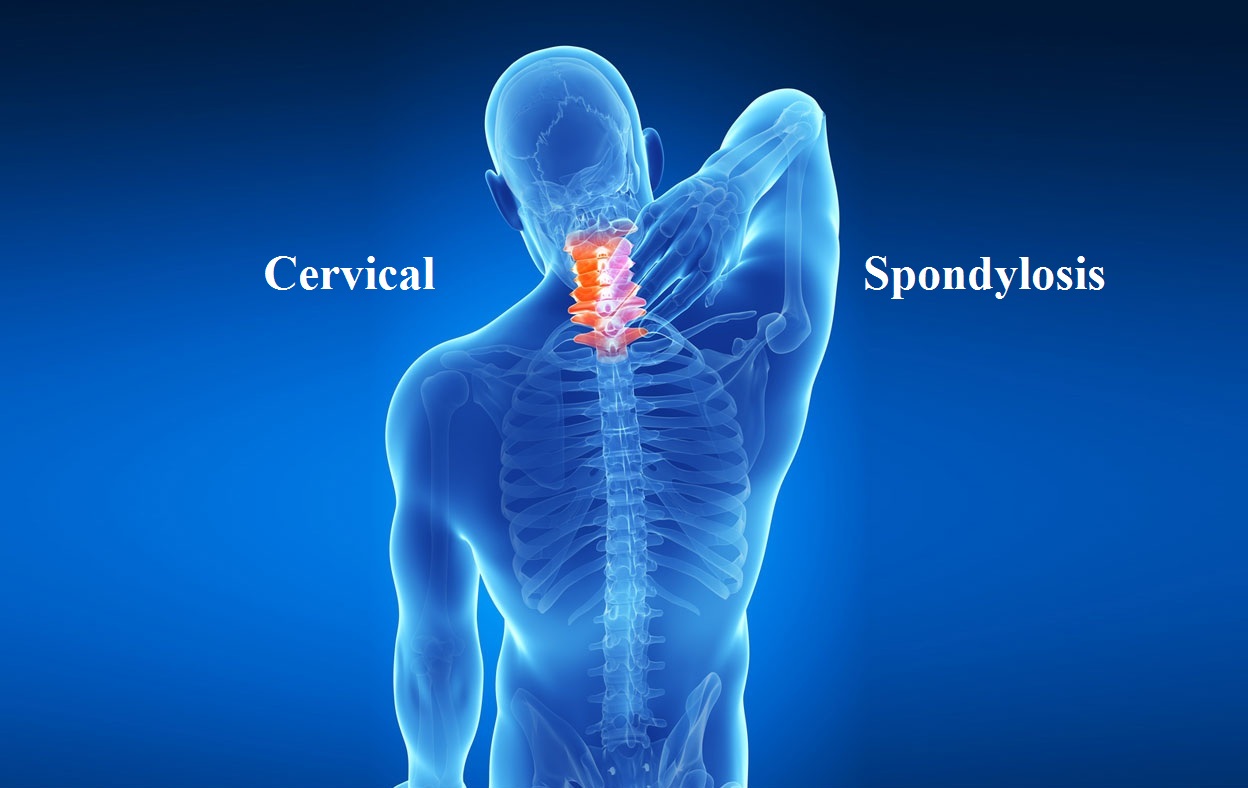
23 Sep 2021 HYN Himalayan Yoga Academy
Cervical spondylitis refers to the long-term stiffening and degeneration of the spinal column in the neck. It causes pain and muscular spasms in the back of the neck and shoulders. Tension headaches often accompany it. The pain may radiate into the shoulders, arms, and forearms, with sensations of pins and needles or tingling in the same areas. Neck movement becomes restricted, and individuals may experience muscular weakness, muscle wasting in the arms, giddiness, and ringing in the ears.
In some cases of spondylitis, doctors can easily see signs of vertebral degeneration in the neck on X-rays. However, paradoxically, an X-ray of the neck in many sufferers appears normal and healthy, showing little or no classical signs of degeneration. Visible degeneration includes the narrowing of the intervertebral disc space. It makes the area appear worn away, and the presence of new dense bony projections, called osteophytes. The foramina, or bony tunnels through which the blood vessels run, become narrowed. These blood vessels supply not only the spinal cord but also the rear portion of the brain, including the cerebellum and medulla.
Bony constriction of these vertebral arteries will cause decreased blood flow to the brain and faintness and giddiness will result. Similarly, bony overgrowth may impinge on the delicate cervical nerve roots emerging on the either side of the vertebral column in the neck. Aches and pain in the back and arms will result.
Cause of Cervical Spondylitis
Osteoarthritis of the vertebral bones of the neck may be precipitated by a previous injury. The neck is the most delicate part of the spinal column and is also one of the most vulnerable. Even a jerk due to a moving vehicle stopping suddenly can cause such an injury in the neck.
Damage can also occur as a gradual degenerative process, due to wear and tear of the joints, bones, muscles ad ligaments of the neck. Hence it is more common after middle-age and especially in the middle-aged sedentary workers who sit with their heads held rigidly forward the whole day.
Medical Management
Modern medicine mainly offers physiotherapy as a remedy for this malady, in addition to anti-inflammatory and analgesic (pain-relieving) drugs. Intervertebral injections of corticosteroids into painful areas often provide effective pain relief by damping down inflammation in the short term. However, many sufferers report that their overall state worsens after receiving a series of injections, with the pain becoming ultimately worse. Physiotherapy often provides effective temporary relief but rarely cures the condition. It is administered in the form of short-wave diathermy, massage, cervical traction, and the wearing of a cervical collar.
Yogic Management
Yogasana prove both palliative and curative in spondylitis. Especially in early and newly diagnosed cases, where minimal changes are detected in X-rays. Asanas act by reducing muscular tension and spasm and also by correcting posture. In addition, they restore pranic balance in the neck, leading to regeneration of damaged tissues and reversal of abnormal bone growth.
The following practice program is prescribed for sufferers of cervical spondylitis. It should be adopted slowly and carefully under skilled guidance, and then practised each morning.
Asana: Pawanmuktasana part 1, especially poorna titali asana (full butterfly), skandha chakra (shoulder socket rotation), and greeva sanchalana (neck movements). The neck rotation exercises should be performed carefully.
One can perform Vajrasana, Shashankasana, Shashank Bhujangasana, Bhadrasana, Shavasana, Akarna Dhanurasana, Makarasana, Marjari-asana, and Sarpasana.
Later on, as the range of pain free movement increases, the following asana can be gradually adopted: padmasana, matsyasana, yoga mudra, supta vajrasana, saral dhanurasana, and ardha matsyendrasana.
- Pranayama: Nadi shodhana stages 1 and 2.
- Meditation: Kaya sthairyam is most effective in spinal diseases and deformities. The head should be held erect but with the slightest tilt backward, the spine upright and shoulders relaxed. An experienced yoga teacher will demonstrate the position
- Relaxation: Yoga nindra in shavasana. A neck support in the form of a soft pillow may be necessary.
- Shatkarma: Neti Kriya daily
- Diet: as for arthritis
- Additional aid: a cervical collar is often helpful.
